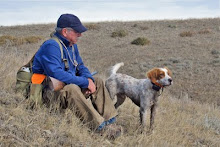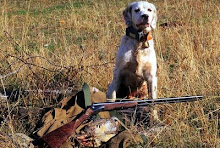As my mathematician friend Pete Houser explains it,
Chaos Theory tells us that the results of random interactions are not predictable. So it is with bird dogs when hunting. The interaction of bird, dog and hunter are not predictable. Add more hunters and dogs and the predictability of a successful outcome further diminishes.
Recently I was able to observe exactly how Chaos Theory applies to bird hunting. One of our setters found a covey of Huns on a knoll and went on point. A second dog backed the point. Meanwhile we had three hunters walking the hillside – one above, one on the level of the pointing dog, and another below the knoll. Things started to unwind when the pointing dog relocated forward to about 30 yards from the covey. The backing dog moved forward, ahead and below the pointing dog. Meanwhile, the three hunters moved forward on different lines of approach. The hunter below saw the pointed dog and moved rapidly up directly towards the expected location of the birds, hoping to be in position for a shot on the flush. The birds were running and the dogs moved up, egging each other on to advance. The birds blew out with only a single bird taken on a long shot by the hunter approaching from below.
From my point of view this was a failure that probably could have been avoided. Instead of presenting five separate threats to the birds, we could have approached the point together from the same direction and, had the backing dog been completely staunch, we would have presented only one or two threats – and from the same direction. The birds likely would have held a bit longer under reduced pressure and offered us all a shot on the flush.
Consistently thinking through the approach to a pointed dog and helping the dog to control the birds is critical to teamwork and a successful outcome.
Further, it is my opinion that tactics used by dogless hunters – walking parallel some yards apart alá cornfield drive tactics – have no place when running a brace of pointing dogs. It suggests that we do not believe that the dogs will properly cover the country and find the birds.
Example: a few days later I was walking my setter through a likely area when he went on point as we crossed the wind at 90 degrees. The sharp-tail he was pointing was about 100 yards up wind on my right – exactly where another one of our group had decided to walk. The bird was flushed and shot by the walking hunter, who had no idea that the dog was even pointing it. Yes, we got the bird, but without the pleasure of the dog work.
Net on this is that by co-operating and running our dogs correctly we can all – dogs included – have a more rewarding hunt.









